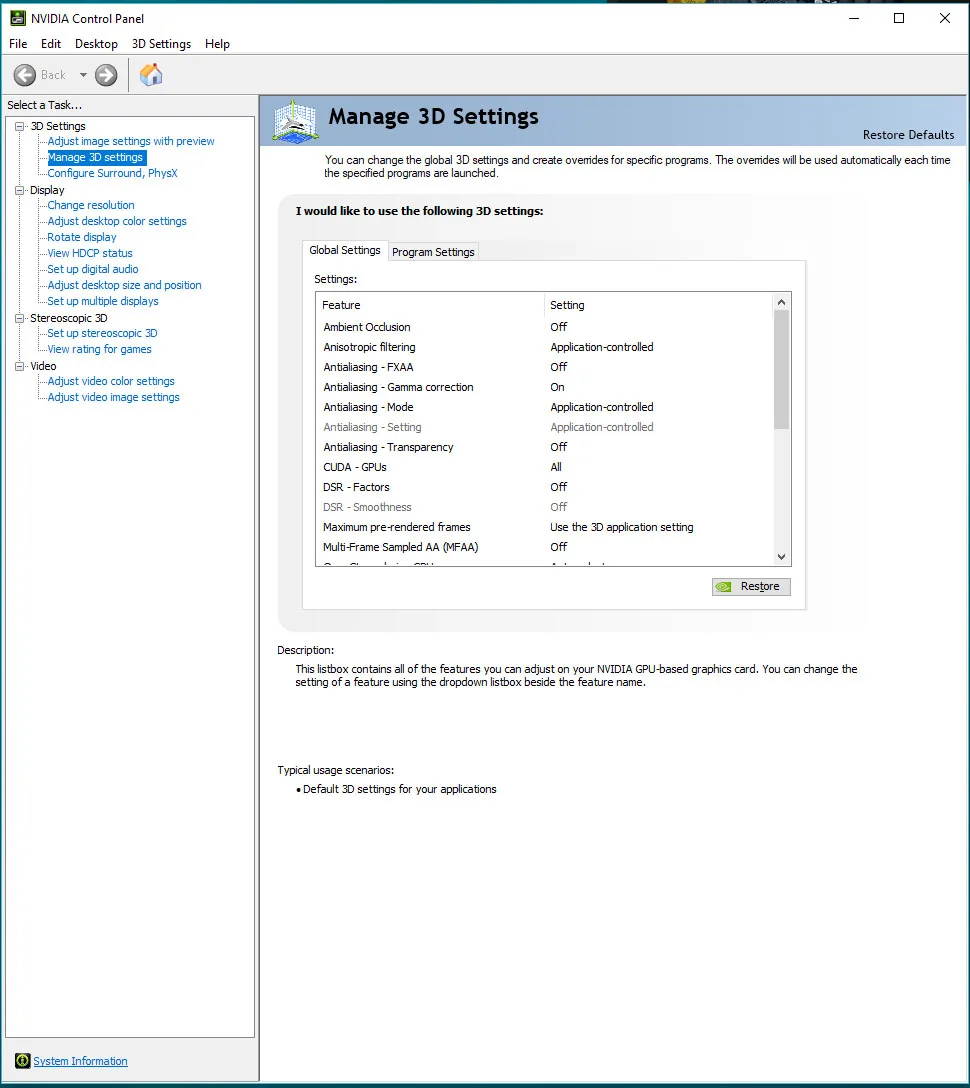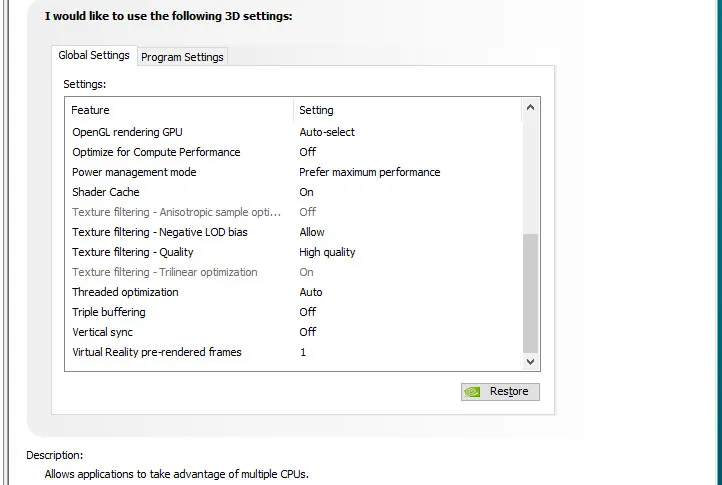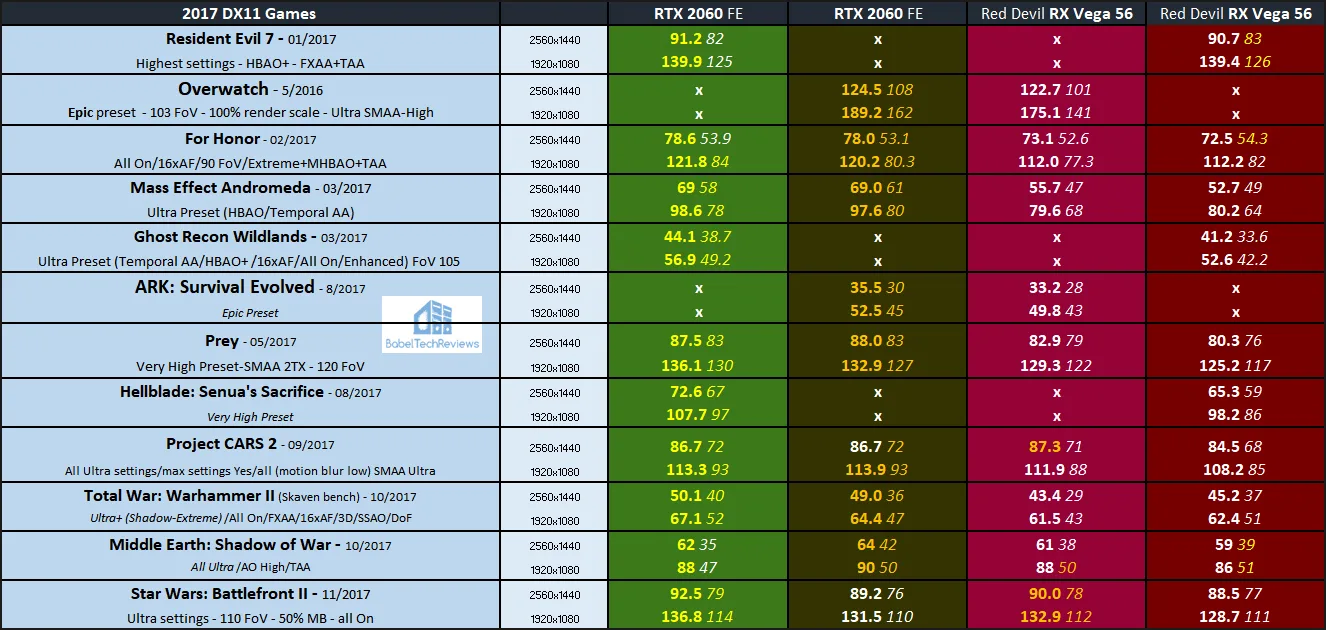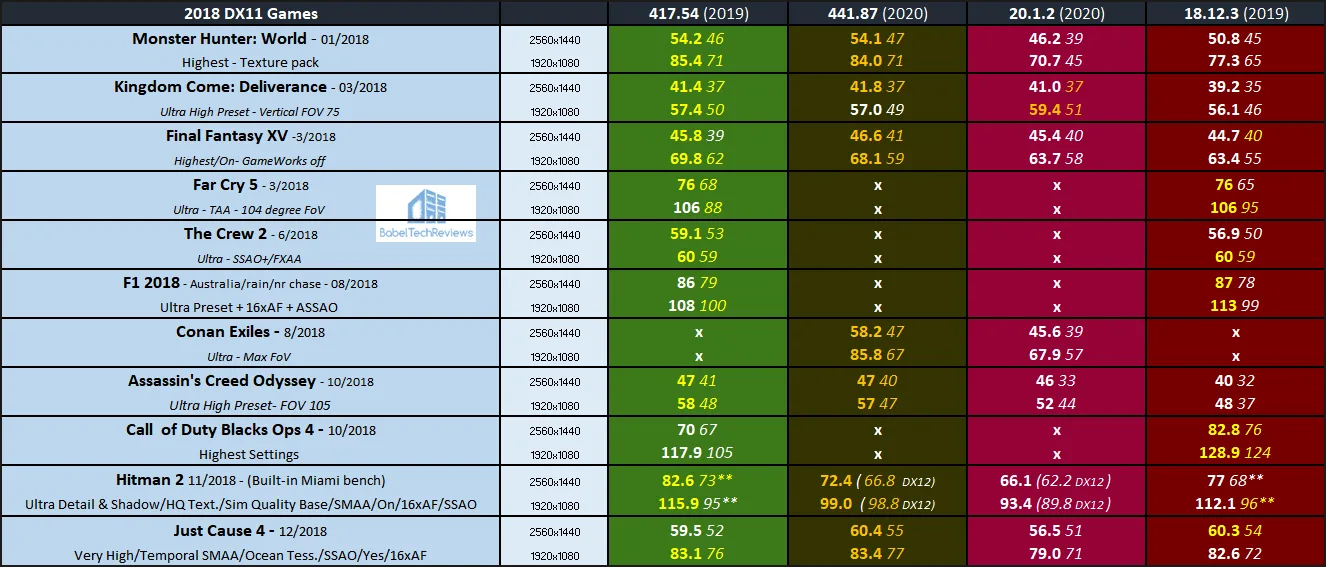The RX Vega 56 8GB vs. the RTX 2060 6GB revisited a year later with more than 60 games
The RTX 2060 6GB launched just over a year ago when BTR compared it versus the RX Vega 56 8GB using 39 games. We concluded this last January:
The RTX 2060 Founders Edition is priced at a reasonable $349 with no price premium over other partner RTX 2060s, and it is faster than … the more expensive premium factory overclocked RX Vega 56.
Since then, AMD has released a faster RX 5700 to replace Vega 56 which has dropped into the $265 price range if they still can be found, and NVIDIA has dropped the price of the entry-level and Founders Editions of the RTX 2060 to $299. We also saw that AMD’s Adrenalin 2020 drivers and NVIDIA’s CES drivers each bring new features and performance improvements. What about today’s performance using the latest drivers for each card?
For this look-back evaluation, we are going to benchmark more than 60 games at 2560×1440 and at 1920×1080 to test the PowerColor Red Devil RX Vega against the RTX 2060 6GB Founders Edition (FE) to see if anything has changed. BTR’s game benchmark suite is continually evolving as we always update our games to include the latest and most popular titles including Mech Warrior 5: Mercenaries and Jedi: Fallen Order.
Let’s check out the cards’ performance after we look over our test configuration.
Test Configuration – Hardware
- Intel Core i7-8700K (HyperThreading and Turbo boost is on to 4.8GHz for all cores; Coffee Lake DX11 CPU graphics).
- EVGA Z370 FTW motherboard (Intel Z370 chipset, latest BIOS, PCIe 3.0/3.1 specification, CrossFire/SLI 8x+8x), supplied by EVGA
- T-FORCE 16GB DDR4 (2x8GB, dual channel at 3866 MHz), supplied by Team Group
- Red Devil RX Vega 56 8GB at Red Devil clocks, on loan from PowerColor
- RTX 2060 Founders Edition at Founders edition factory settings, on loan from NVIDIA
- 2 x 480GB Team Group SSDs – one for AMD, and one for NVIDIA
- 1.92TB San Disk enterprise class SSD
- 2TB Micron 1100 enterprise class SSD
- 500GB Vulkan SSD, supplied by Team Group
- EVGA 1000G 1000W Gold power supply unit
- Cooler Master 240mm CPU water cooler
- EVGA Nu Audio PCIe soundcard, supplied by EVGA
- Edifier R1320T Active speakers
- EVGA DG-77, mid-tower case supplied by EVGA
- LG 43″ HDR 4K TV
- Monoprice Crystal Pro 4K
Test Configuration – Software
- GeForce 417.54 drivers (January, 2019) and 441.41 drivers (January, 2020). See NVIDIA Control Panel image below.
- AMD Adrenalin Software 18.12.3 (January, 2019) and 20.1.2 (January 2020). See the AMD Control Panel image below.
- VSync is forced off.
- AA enabled as noted in games; all in-game settings are specified with 16xAF always applied
- Gaming results show average frame rates in bold including minimum frame rates shown on the chart next to the averages in a smaller italics font where higher is better. Games benched with OCAT show average framerates but the minimums are expressed by the 99th percentile frametime in ms where lower numbers are better.
- Highest quality sound (stereo) used in all games.
- Windows 10 64-bit Home edition. DX11 titles are run under DX11 render paths. DX12 titles are generally run under the DX12 render path unless performance is lower than with DX11; and Borderlands 3, Total War Warhammer II, and Hitman 2 are tested on DX11 and on DX12. Seven games use the Vulkan API.
- Latest DirectX
- All 60+ games are patched to their latest versions at time of posting.
- The Adrenalin 2020 control panel is used to set Radeon options
- The NVIDIA control panel is used for GeForce settings
- OCAT, latest version
- Fraps, latest version
- Unigine Heaven 4.0 benchmark
60+ PC Game benchmark suite & 3 synthetic tests
Synthetic
- Firestrike – Basic & Extreme
- Time Spy DX12
- Superposition
DX11 Games
- Grand Theft Auto V
- The Witcher 3
- Fallout 4
- Rainbow Six Siege
- Battlefield 1
- Resident Evil 7
- Overwatch
- For Honor
- Mass Effect: Andromeda
- Ghost Recon Wildlands
- ARK: Survival Evolved
- Prey
- Hellblade: Senua’s Sacrifice
- Project CARS 2
- Total Wars: Warhammer II
- Middle Earth: Shadow of War
- Star Wars: Battlefront II
- Monster Hunter: World
- Kingdom Come: Deliverance
- Final Fantasy XV
- Far Cry 5
- The Crew 2
- F1 2018
- Conan Exiles
- Assassin’s Creed: Odyssey
- Call of Duty: Black Ops 4
- Hitman 2
- Just Cause 4
- Resident Evil 2
- Anthem
- FarCry New Dawn
- Devil May Cry 5
- Borderlands 3
- Destiny 2 & Shadowkeep
- Ghost Recon Breakpoint
- The Outer Worlds
DX12 Games
- Ashes of the Singularity: Escalation
- Tom Clancy’s The Division
- Hitman
- Deus Ex: Mankind Divided
- Gears of War 4
- Civilization VI
- Sniper Elite 4
- Forza 7
- Total War: Warhammer II
- Warhammer: Vermintide 2
- Shadow of the Tomb Raider
- Hitman 2
- Battlefield V
- Metro Exodus
- Tom Clancy’s The Division 2
- Anno 1800
- F1 2019
- Control
- Gears 5
- Borderlands 3
- Call of Duty Modern Warfare
Vulkan Games
- DOOM
- Strange Brigade
- World War Z
- Wolfenstein: Youngblood
- Star Control Origins
- Red Dead Redemption 2
AMD Adrenalin Control Center Settings
All AMD settings are set so as to be apples-to-apples when compared to NVIDIA’s control panel settings – all optimizations are off, Vsync is forced off, Texture filtering is set to High, and Tessellation uses application settings.

We pick the above Custom Global Performance settings for our benchmarking which has to be precisely repeatable, so Surface Format and other optimizations are disabled. As above, Anisotropic Filtering is disabled by default but we always use 16X for all game benchmarks.
NVIDIA Control Panel settings
Here are the NVIDIA Control Panel settings that match AMD’s settings.
 We did not adjust either card’s Power or Temperature limits since it does not benefit low-to-mid-power cards.
We did not adjust either card’s Power or Temperature limits since it does not benefit low-to-mid-power cards.
Let’s check the performance of our more than 60 game benchmark suite, and then head for our conclusion.
Performance Summary Charts
Here are the summary charts of more than 60 games and 3 synthetic tests. The highest settings are always chosen. The benches were run at 1920×1080 and 2560×1440. All results show average framerates in bold and the minimums are next to them in italics, and higher is always better. Games benched with OCAT also give average framerates but the minimums are expressed by the 99th percentile frametime in ms where lower numbers are better. “X” means the benchmark was not run.
The first two columns shows the RTX 2060 performance results with 2019 GeForce drivers in the first column compared with 2020 drivers in the second. The RX RX Vega 56’s results are compared in the last two columns; three shows Adrenalin 2020 driver performance and column four shows 2019 results. “Wins” between the RTX 2060 and the RX Vega 56 are based on averages and the higher performing card’s framerates are given in yellow text for 2019 performance results and in gold text for 2020 results unless there is a tie in which case both sets of results will be colored.
There is a bug with Control where the game refuses to launch in DX12 for the RX Vega 56 and we did not count the results. Also the benchmarks changed between 2019 and 2020 for Hitman 2 and for Destiny 2 so driver performance across the two years should not be compared for these games.
The RTX 2060 is still our fastest card for the majority of our games although the Vega performance bug has been fixed for Forza 7 and the RX Vega 56 has narrowed the gap for several of the titles that we tested both last year and this year. Last year, the RX Vega 56 won 23 benches and tied one to the RTX 2060’s 52 wins. This January, the RX 2060 won 64 benches and tied 3 while the RX Vega 56 took 34 individuals wins.
Let’s head for our conclusion.
The Conclusion
Both AMD and NVIDIA have made progress with their drivers but as in last January’s evaluation, the RTX 2060 FE 6GB is still overall faster than the RX Vega 56 8GB although the Red Devil has made up performance ground in some titles. If overclocking is taken into consideration, the RTX 2060 will pull away further.
The RX Vega series has been discontinued in favor of Navi Radeons although RX Vega 56es can still be found around for around $265 in the USA. The RTX 2060 offers entry-level GeForce ray tracing capabilities and can be found starting at $299.
Stay tuned, there is a lot coming from us at BTR. We have two video card reviews scheduled for early next week that you do not want to miss. And we have a T-FORCE LIQUID CARDEA M.2 SSD on deck followed by a ray traced game review and more VRSS with Boneworks.
Happy Gaming!








